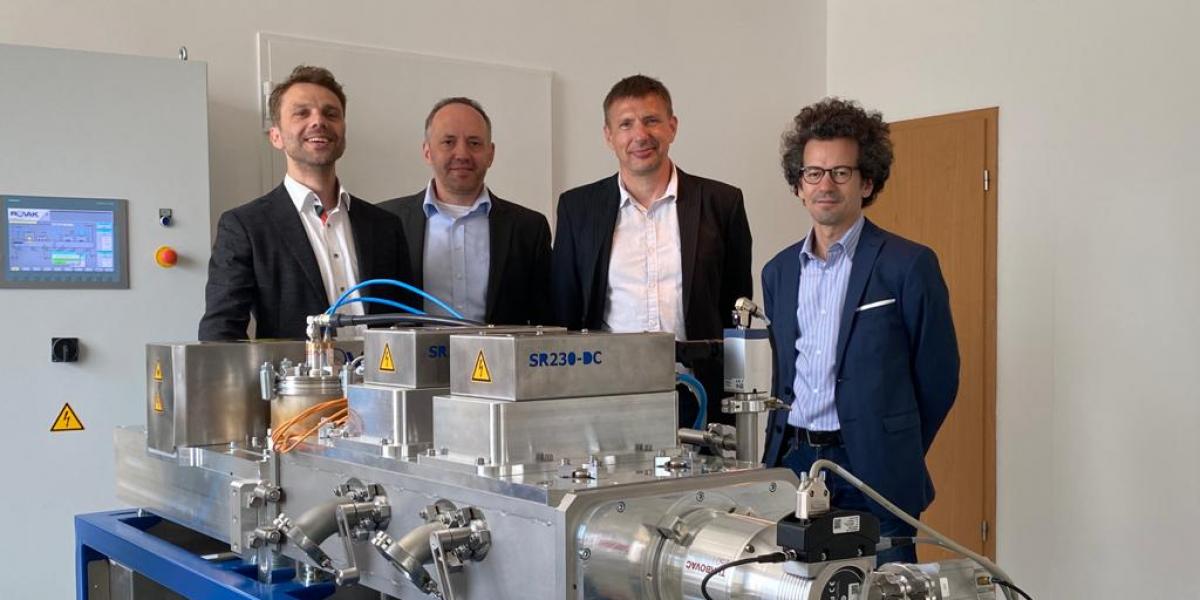
NorcSi is the new Tech-Startup at the Weinberg Campus
Since November 1st, 2020, NorcSi GmbH can be at the Weinberg Campus Innovation Hub. The startup develops new approaches in battery technology to extend the range of energy storage devices. This technology is likely to be particularly popular in the field of electromobility. The company is the result of a cooperation between the Helmholtz Centre Dresden-Rossendorf (HZDR), the TU Bergakademie Freiberg (TU-BAF) and the machine and plant manufacturer Rovak GmbH from Wilsdruff.
“With our patented technology, we are already achieving an increase in the energy density of lithium-ion batteries by a factor of two to three in the laboratory.”
Dr. Charaf Cherkouk, one of the founders of NorcSi GmbH
“Silicon is a very good raw material, which is environmentally safe and highly available”, says co-founder Dr. Marcel Neubert and adds: “This not only makes the batteries more powerful, but also makes them much more cost-effective to manufacture”. Within the next one to two years, the technology is to be scaled up to an industrial scale. This is made possible, among other things, by the financing of bmp Ventures AG with resources from the IBG funds.
NorcSi is already settling in on the Weinberg Campus and in Halle (Saale). Currently, development projects with the Martin Luther University Halle-Wittenberg are already in the pipeline. NorcSi is currently seeking support from technical assistants/bachelor’s graduates, ideally by December 1, 2020, and a research assistant.
In order to promote the growth of the young company, the Weinberg Campus Accelerator provides demand-oriented coaching and helps with the integration into the network of the Weinberg Campus and the funding landscape of Saxony-Anhalt.
About NorcSi
NorcSi GmbH develops innovative high-performance electrodes for use in lithium-ion batteries. The process developed in cooperation with the Helmholtzzentrum Dresden-Rossendorf (HZDR) and the TU Bergakademie Freiberg (TU BAF) allows NorcSi to use high performance silicon in anodes. The problem of the increase in volume of silicon crystals during the charging process is circumvented by nanostructured silicon layers.









